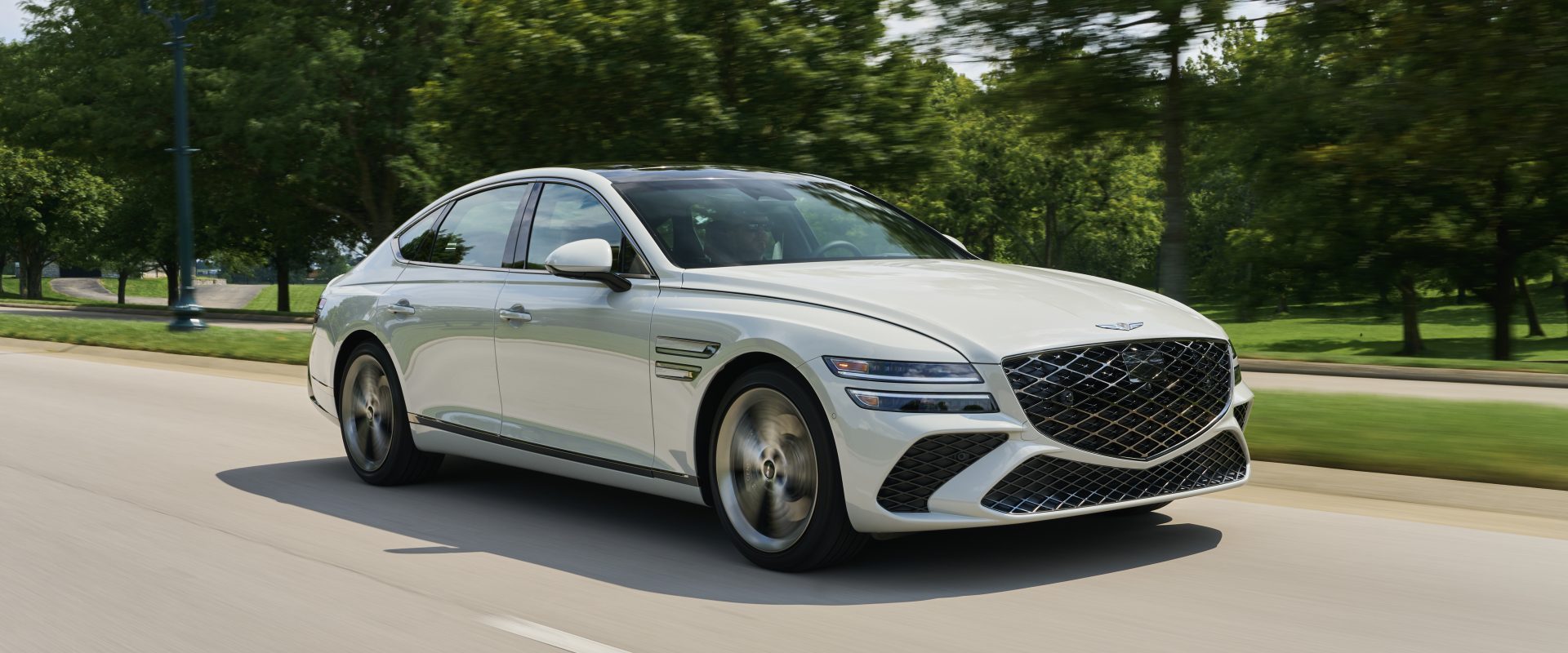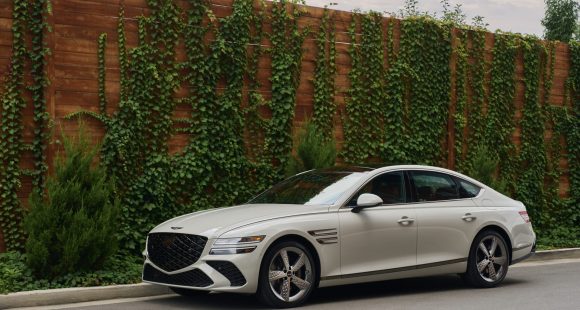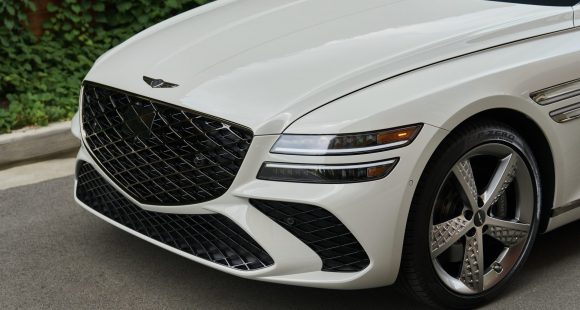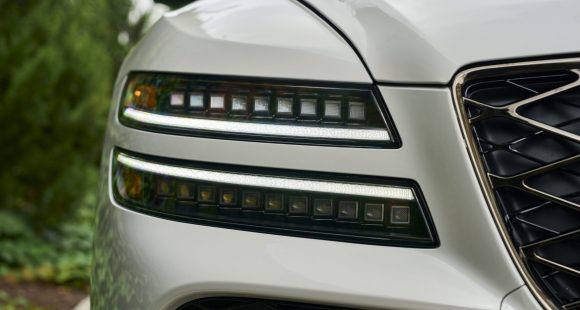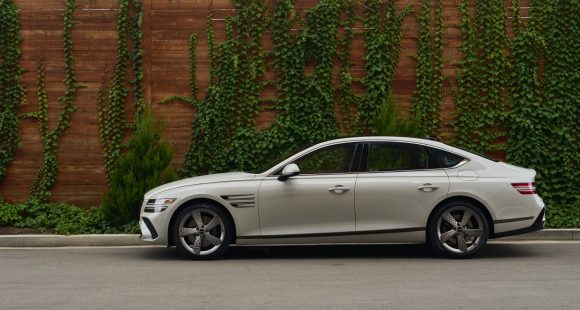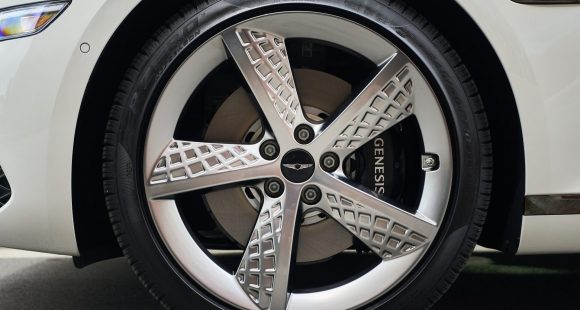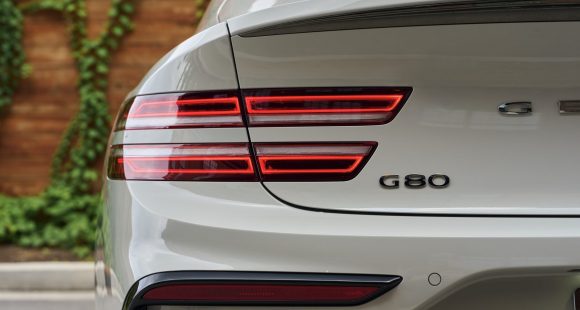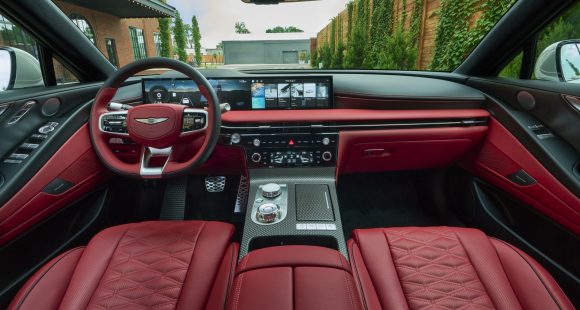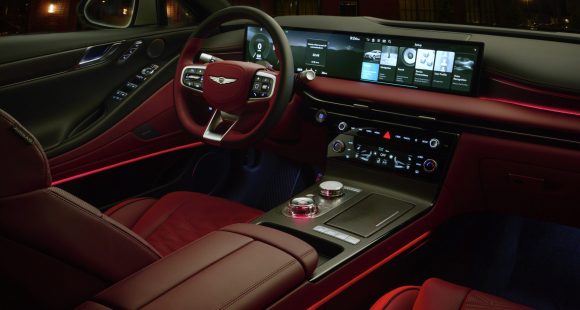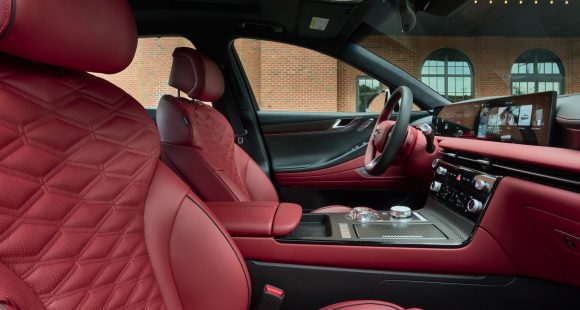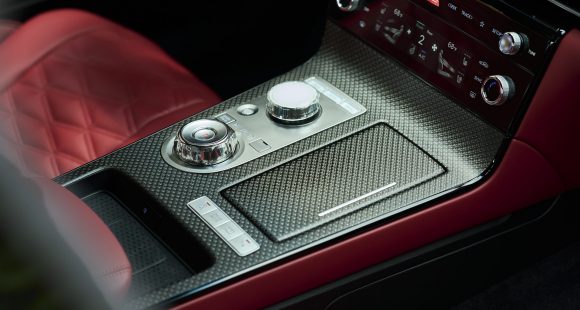2017 Kia Optima Hybrid
The euro-styled kia optima mid-size sedan has been quite a hit for the brand, and a favorite of ours here at Motorweek as well. But what most people may not realize is that the optima lineup includes a gasoline-electric hybrid. And for 2017, it gets a full redesign, encompassing all of the benefits of the optima’s new 4th generation chassis.
Kia has actually had a high mileage hybrid in the Optima lineup since 2011. And with the 4th generation of Kia’s midsizer kicking off last year, 2017 sees an all-new powertrain for this gasoline-electric. The new hybrid system consists of 2.0-liter I4, downsized from the previous gen’s 2.4-liter. But, there’s a bigger electric motor in place to aid it, 38-kW compared to last year’s 30-kW motor. Combined, horsepower is actually down from 206 to 192; but torque is much torquier, climbing from 195 lb-ft. to 271.
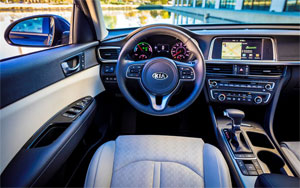 Battery size increases from 1.4 to 1.6-kWh; and as before, it’s placed under the rear trunk floor, robbing a bit of storage space, though keeping the split/folding seatbacks in play. Capacity is 13.4 cubic-ft., compared to the base sedan’s 15.9. Thankfully, the transmission is still a 6-speed auto; and there’s been no change to a CVT. Government Fuel Economy Ratings are 39-City, 46-Highway, and 42-Combined; so our average of 41.7 miles-per-gallon on Regular was just about spot on. That makes for a very good Energy Impact Score, with use of just 7.8-barrels of oil per year while emitting just 3.5-tons of CO2.
Battery size increases from 1.4 to 1.6-kWh; and as before, it’s placed under the rear trunk floor, robbing a bit of storage space, though keeping the split/folding seatbacks in play. Capacity is 13.4 cubic-ft., compared to the base sedan’s 15.9. Thankfully, the transmission is still a 6-speed auto; and there’s been no change to a CVT. Government Fuel Economy Ratings are 39-City, 46-Highway, and 42-Combined; so our average of 41.7 miles-per-gallon on Regular was just about spot on. That makes for a very good Energy Impact Score, with use of just 7.8-barrels of oil per year while emitting just 3.5-tons of CO2.
That’s a significant improvement over last gen for sure, but still short of many other hybrids out there. For those looking for more, a plug-in version with a larger battery and up to 27 miles of EV-only driving is on the way. As for daily use, the Optima hybrid makes some noises you wouldn’t hear in a typical petrol Optima, but otherwise operates with the same smooth, Euro-like demeanor. After an hour or two behind the wheel, it’s easy to forget you’re even in a hybrid. If you wish to be reminded, a new Eco-Driver Assistance System will coach you on how to get the most efficiency as possible, with prompts in the IP, as well as with audible alerts. With very good steering feel, this gen’s stiffer chassis, and the aforementioned transmission; this is one hybrid we truly enjoyed driving.
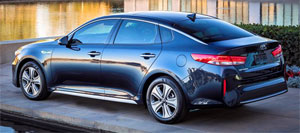 There’s good comfort in all seating positions and plenty of nice soft touch materials. EX trim comes with heated leather seats, heated steering wheel, surround sound, and navigation. Adding the Technology package will get you a panoramic sunroof, ventilated front seats, heated rear seats, and a host of safety systems including Autonomous Emergency Braking. The exterior differs little from base Optima. That’s a good thing as far as we’re concerned, as we feel the Optima is one of the best looking rides in the family sedan segment.
There’s good comfort in all seating positions and plenty of nice soft touch materials. EX trim comes with heated leather seats, heated steering wheel, surround sound, and navigation. Adding the Technology package will get you a panoramic sunroof, ventilated front seats, heated rear seats, and a host of safety systems including Autonomous Emergency Braking. The exterior differs little from base Optima. That’s a good thing as far as we’re concerned, as we feel the Optima is one of the best looking rides in the family sedan segment.
But, nothing is for free, as there’s always a price to pay. Here, it starts at $26,890 in Premium trim, or about a grand less than the stingier Toyota Camry Hybrid. Optima Hybrid in EX trim, at $31,885, is about 5-grand over a standard non-hybrid Optima.
The 2017 Kia Optima may come up short when it comes to absolute fuel economy. But, much like the Ford Fusion Hybrid and Chevrolet Malibu Hybrid, it offers handsome styling, and a traditional sedan feel, that many other modestly priced hybrids can’t match, plus, it adds a unique driving experience that’s clearly European in flavor. So, don’t look at the Optima Hybrid as the ultimate hyper-miler’s choice, but a more efficient option for those looking for a roomy, great looking, fine driving car.
Specifications
- Engine: 2.0-liter I4
- Horsepower: 192
- Torque: 271 lb-ft.
- EPA: 39 mpg city / 46 mpg highway
- Energy Impact: 7.8 barrels of oil/yr
- CO2 Emissions: 3.5 tons/yr
2025 Genesis G80
New Interior And New Tech Elevates G80 Sedan
Talk about bad timing. This second-generation G80 debuted at the height of a global pandemic. But that hasn’t stopped Genesis or this Bentley-on-a-budget sedan. In fact, since then, Genesis has unveiled a spectacular all-electric version and now given all G80s a makeover. So, let’s find out what a better and better-timed new G80 is ready to deliver.
Breaking into the luxury sedan scene requires going up against traditional brands with long pedigrees and legions of loyal buyers. But Hyundai has never shied away from a challenge, and has made steady progress with their Genesis brand, and hopes that a revised 2025 G80 midsize sedan will be their next step up.
Styling matters more when you’re the upstart, and the Genesis Athletic Elegance theme changes very little for ’25; just a new grille, slightly reshaped bumpers, new wheels ranging from 18 to 20 inches, and an updated color palette. The G80’s unique two-line LED headlamps get revised Micro Lens Array technology that boosts performance while minimizing the brightness for oncoming drivers.
Changes inside are much more significant with an entirely new dash and console, eliminating both the hooded gauge panel and dashtop wide info screen. Merging them together into one 27-inch wide LG panoramic display than runs from behind the steering wheel to over the center stack. There’s a bigger and more comprehensive control panel in the center stack; while the console gets less armrest coverage, more space for storage, and reshaped cupholders. The wider display is still a touchscreen, but there is also a console mounted controller if you prefer to keep it fingerprint free. Both options work well, but the controller is still too easy to confuse with the dial-like shifter.
Materials are on par if not a notch above most European luxury rivals, and there are 18 speakers to crank out 1,400 watts of premium sound from Bang & Olufsen. Top Sport Prestige trim comes with Nappa leather seats, carbon fiber trim, micro-suede materials for the headliner and pillar covers, heated armrests, head-up display, and upgraded active safety features. Front seats are immensely comfortable without feeling overly soft, and there’s plenty of comfort and room for adults in the back seat.
More Bentley than Benz; streaking down the track with European-style solidity that gives you very little indication of the high speed you’re traveling at.
Same powertrains as last year. Base power comes from a 300-horsepower 2.5-liter turbo-four; the upgrade is this 3.5-liter twin-turbo V6 that outputs 375 horsepower and 391 lb-ft of torque. Both are hitched to standard all-wheel drive. At our Mason Dixon Dragway test track, the AWD delivered enough grip for consistent slip-free launches. We hit 60 in 5.0 seconds flat. Run after run, the 3.5T pulled as strong as it sounds. All G80s work with the same paddle-shift eight-speed automatic transmission, and while shifting was silky smooth on the street, here on the track with Sport Mode and wide-open throttle they were noticeably firmer and quicker.
It was a very surreal experience in the cabin. More Bentley than Benz; streaking down the track with European-style solidity that gives you very little indication of the high speed you’re traveling at. For us, that was 105 mph in 13.4 seconds at the quarter. In addition to the G80’s Sport Mode that tightens steering, improves throttle response, adjusts shifting points, firms up the suspension, and reconfigures stability system parameters; Sport Prestige trim adds rear-wheel steering and an electronic limited slip differential. But, even with all of that, it didn’t feel overly sporty in our handling course. Now, we were able to comfortably carry quite a bit of speed through the cones, but there was just an overall soft, somewhat disconnected and heavy presence that had us unsure of how hard we could push. Sport Prestige also adds upgraded performance brakes. They were plenty capable, bringing this 4,600-lbs. luxury liner consistently down from 60 in just 104 feet with little fade.
Government Fuel Economy Ratings for the six-cylinder are 16 City, 24 Highway, and 19 Combined. We averaged a good 21.3 mpg of Premium. Still, that’s a slightly below average Energy Impact Score, using 15.7 barrels of oil annually with 7.8 tons of CO2 emissions.
Considering the amount of luxury packed into the G80, its $58,350 starting price, even though slightly higher than last year, remains pretty remarkable. It’s a substantial step up to the 3.5T though, as it begins at $70,850.
Genesis has existed as a standalone luxury brand for just less than a decade, and it has indeed been making steady progress into what is surely the hardest segment of all to master. The 2025 Genesis G80 sedan continues to impress and is a great option for luxury-minded buyers who prioritize true value over badges.
Specifications
As Tested
- Engine: 3.5-liter twin-turbo V6
- Transmission: eight-speed automatic
- Horsepower: 375
- Torque: 391 lb-ft
- EPA: 16 City | 24 Highway | 19 Combined
- 0-60 mph: 5.0 seconds
- 1/4 Mile: 13.4 seconds at 105 mph
- Braking, 60-0 (avg.): 104 feet
- MW Fuel Economy: 21.3 mpg (Premium)







